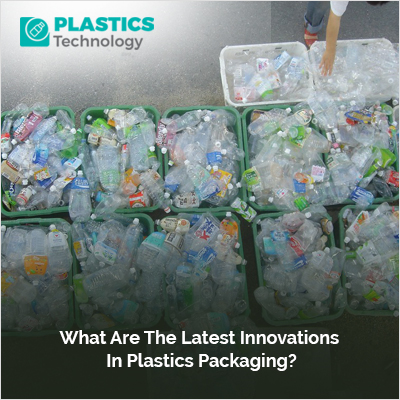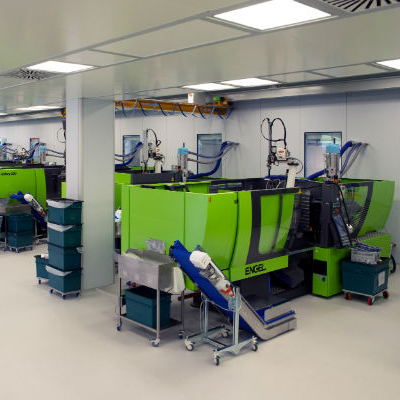What Are The Latest Innovations In Plastics Packaging?

Introduction:
Plastic packaging has been an essential component of modern consumer goods distribution for decades. However, concerns over environmental impact and sustainability have spurred a wave of innovation in this industry. Today, researchers, engineers, and companies are actively working on developing new materials, designs, and technologies to create more sustainable and efficient plastic packaging solutions. In this article, we delve into some of the latest innovations in plastic packaging, highlighting their potential to address environmental challenges while meeting the needs of businesses and consumers.
Biodegradable and Compostable Plastics:
One of the most significant advancements in plastic packaging is the development of biodegradable and compostable plastics. Traditional plastics can persist in the environment for hundreds of years, contributing to pollution and harming wildlife. Biodegradable plastics, on the other hand, are designed to break down into natural components when exposed to certain environmental conditions, such as sunlight, heat, or moisture.
Polylactic acid (PLA) is a popular biodegradable plastic derived from renewable resources such as corn starch or sugarcane. It offers similar properties to traditional plastics but decomposes much faster under the right conditions. Companies are increasingly incorporating PLA into packaging materials for various products, including food, beverages, and personal care items. Compostable plastics take biodegradability a step further by breaking down into organic matter that can be safely composted along with food scraps and other organic waste. These materials offer a closed-loop solution, where packaging can be disposed of in composting facilities, reducing reliance on landfills and incineration.
Recyclable and Recycled Plastics:
Another key focus area for innovation in plastic packaging is recyclability. Designing packaging materials that are easily recyclable and incorporating recycled content into new products can significantly reduce the environmental footprint of packaging.
Advanced recycling technologies, such as chemical recycling or depolymerization, are enabling the conversion of used plastics into high-quality raw materials for new packaging applications. These processes can handle a broader range of plastic types, including mixed or contaminated plastics, which traditional mechanical recycling methods struggle with. Furthermore, innovations in packaging design are optimizing materials for recyclability, such as lightweighting to reduce material usage, eliminating unnecessary layers or coatings, and using mono-materials that are easier to recycle. Companies are also exploring novel approaches like designing packaging with detachable components or using markers to facilitate sorting and recycling processes.
Smart Packaging Solutions:
In the era of the Internet of Things (IoT) and digital connectivity, smart packaging solutions are gaining traction as a means to enhance functionality, improve safety, and reduce waste. Smart packaging incorporates sensors, indicators, or interactive elements to provide real-time information about product freshness, integrity, and usage.
For example, intelligent labels equipped with sensors can monitor temperature, humidity, or gas levels inside packages, ensuring the quality and safety of perishable goods during transport and storage. NFC (Near Field Communication) tags and QR codes enable consumers to access detailed product information, including origin, ingredients, and recycling instructions, using their smartphones. Moreover, smart packaging can help prevent food waste by alerting consumers when products are approaching their expiration dates or suggesting recipes based on available ingredients. By providing actionable insights and fostering greater transparency, these technologies empower consumers to make more informed purchasing decisions and reduce unnecessary consumption.
Bio-Based Plastics and Alternative Materials:
In addition to biodegradable plastics derived from renewable sources, researchers are exploring a wide range of bio-based plastics and alternative materials as sustainable alternatives to traditional petroleum-based plastics. Bio-based plastics, such as polyethylene made from sugarcane ethanol or polyethylene furanoate (PEF) from plant-based sources, offer similar performance characteristics to their fossil fuel-based counterparts but with a reduced carbon footprint. These materials can help mitigate reliance on finite fossil resources and reduce greenhouse gas emissions associated with plastic production. Furthermore, alternative materials like edible packaging made from seaweed or starch-based films are gaining attention for their potential to eliminate packaging waste. These materials are not only biodegradable but also edible or compostable, providing a novel solution to single-use plastic packaging.
Conclusion:
The landscape of plastic packaging is undergoing a profound transformation driven by innovation, sustainability, and the growing demand for more environmentally friendly solutions. From biodegradable and compostable plastics to recyclable materials and smart packaging technologies, the latest advancements hold promise for reducing plastic pollution, conserving resources, and improving the efficiency and safety of packaging systems.
However, addressing the complex challenges associated with plastic packaging requires collaboration across industries, governments, and consumers. By investing in research and development, adopting sustainable practices, and embracing innovative solutions, we can move towards a circular economy where packaging materials are reused, recycled, or regenerated, minimizing environmental impact while meeting the evolving needs of society.



